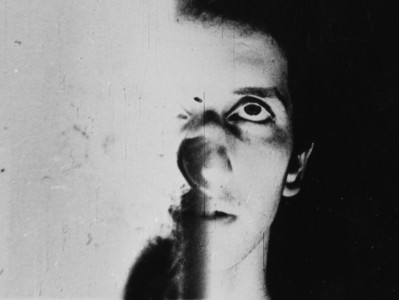
When the Eye Quakes.
The Cinema of Paolo Gioli
Paolo Gioli - Program One
Director in Person
Screening on Film
$12 Special Event Tickets
PROGRAM
-
Commutations With Mutation (Commutazioni con mutazione)
Directed by Paolo Gioli.
Italy, 1969, 16mm, color and b&w, silent, 7 min.
Print source: Paolo Vampa
Composed using three different formats that have been made to co-exist: super-8, 16mm and 35mm on a single 16mm support, clear leader. The variations in size caused the original framelines to overlap, subjecting them—and with them their images—to a singular diabolical rhythm. – Paolo Gioli
The semi-scientific character of this work is in some degree due to the stereo-stroboscopic visual mechanism employed in its making. The careful and paradoxical loading up of profiles alternating between negative and positive is aligned along the axis of a soundtrack of super-synchronized percussions, giving rise to a complexity which can be deciphered only by an attentiveness of the degree required for a visual psychological test. – PG
This film, as the Vertovian title indicates, was made without a movie camera, more precisely with a device custom-made to restore to images freedom from optics and mechanics. The act of substituting my device for a traditional movie camera is part of a project I have continued from that moment on towards weaning myself from a consumer technology, a toxin to pure creativity. This strange movie camera is a simple little hollow tube, one centimeter thick, two centimeters wide... with two reels to hold 16mm film pulled manually causing alternations of time and space. The images enter simultaneous through 150 holes distributed along one side in proximity to each frame, that come to make up 150 tiny pinhole cameras, also called stenopeic from the Greek stenos = narrow and from the stem op- from oráo = to see. – PG
It all started with the notorious Buñuelian sliced eyeball, that surprises us every time! The anxiety of the incision is transformed into a saccadic, uncontrolled anxiety precisely of the eye and its pupil. – PG
This brief film, it seems to me to exist, finally, as if it I had found it somewhere completely forgotten, as if it had been some unsuccessful pre-cinematic experiment. – PG











